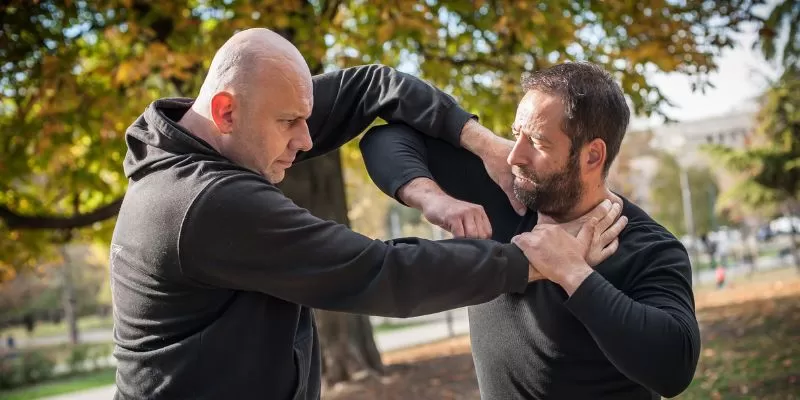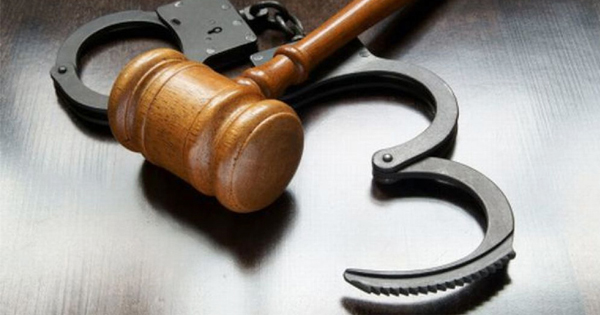Facing an assault charge can be disorienting, especially when you believe you acted to protect yourself or someone else. Georgia law recognizes justified force, but courts apply specific standards to test whether your actions fit within those protections. This article explains what judges and juries look for when a defendant raises self-defense, how the burden of proof shifts, and which facts tend to persuade. If you are navigating Self-Defense In Georgia Assault allegations, understanding these criteria can help you make informed decisions from day one. The Law Office of Blake Poole works within these frameworks daily, building evidence-rich narratives that withstand scrutiny at hearings and trial.
Meeting the legal threshold for justified self-defense in Georgia
Georgia’s justification statutes don’t just ask what happened; they ask whether a reasonable person in the same circumstances would have believed force was necessary. Under O.C.G.A. § 16-3-21, you may use force when you reasonably believe it’s needed to defend against the imminent use of unlawful force, and you may use deadly force only to prevent death, great bodily injury, or the commission of a forcible felony. The state’s stand-your-ground rule (O.C.G.A. § 16-3-23.1) removes any duty to retreat if you are someplace you’re legally allowed to be, but it does not eliminate the need for a reasonable belief. Courts also examine disqualifiers, such as whether you started the fight or were committing a felony at the time. If you plan to assert Self-Defense In Georgia Assault cases, these are the core legal thresholds you and your attorney must address.
What the prosecution must—and need not—prove
Once you present “some evidence” of justification, the burden shifts to the prosecution to disprove self-defense beyond a reasonable doubt. That shift is crucial: the state must show your belief wasn’t reasonable, your response wasn’t proportional, or a statutory bar applies. Prosecutors typically focus on inconsistencies in your account, escalation of force (for instance, bringing a weapon into a fistfight), and actions suggesting revenge rather than protection. They may argue there was no immediate threat, that you had a safe alternative, or that you were the initial aggressor and didn’t withdraw. Understanding these angles helps your defense team craft a narrative and evidentiary record that directly anticipates and counters those points.
Proportionality and imminence in practice
Proportionality and imminence are where many defenses rise or fall. “Imminent” means the threat was about to occur, not hypothetical or in the distant future; courts weigh timing, distance, and the aggressor’s capability to inflict harm. Proportionality demands that your force match the threat—using potentially lethal force is reserved for preventing death, serious injury, or a forcible felony, not just to resolve a heated argument. Judges also consider whether your conduct continued after the threat subsided, which can turn a justified initial response into excessive force. The goal is to show a continuous chain of necessary, proportional force, grounded in a good-faith, reasonable belief under fast-moving conditions.
Gathering witness statements and evidence to support justification
A strong self-defense case is rarely built on words alone; it’s assembled from corroborating facts that show what you saw, heard, and believed at the moment force was used. Attorneys move quickly to preserve surveillance footage, canvass for witnesses, and capture images of injuries and property damage before they fade or are lost. Time is often critical; video systems overwrite and memories degrade. In assault cases, 911 recordings and dispatch logs can provide contemporaneous evidence of fear, urgency, and the aggressor’s conduct. For defendants asserting Self-Defense In Georgia Assault defenses, early evidence collection can make the difference between a murky narrative and a detailed, persuasive account.
Core evidence that supports reasonableness
- Witness statements: Independent observers can confirm who initiated contact, whether threats were made, and how quickly a situation escalated.
- Surveillance and smartphone video: Footage often clarifies distance, movements, and whether a weapon was present—key to proving imminence and proportionality.
- 911 calls and bodycam: These materials capture tone, timing, and spontaneous statements that courts view as highly credible.
- Medical records and injury photos: Documentation of defensive wounds, bruising, or lacerations shows force was used against you first, or that your response was reactive rather than aggressive.
- Scene photos and physical evidence: Broken objects, blood patterns, and bullet trajectories can corroborate your description of angles, positions, and threats.
- Digital communications: Texts, social media messages, and call logs may establish prior threats or harassment and help explain your state of mind.
Techniques for preserving and presenting evidence
Effective defense teams don’t just gather evidence; they authenticate and contextualize it so a jury can trust what it shows. That often means securing affidavits from witnesses while events are fresh, sending preservation letters to businesses with cameras, and promptly subpoenaing phone records. When video exists, frame-by-frame analysis and synchronized timelines with 911 data can demonstrate how quickly events unfolded, supporting a claim that your response had to be immediate. Meticulous chain-of-custody logs protect against challenges that footage was altered or selectively clipped. By the time evidence reaches the courtroom, it should not only exist—it should tell a coherent, verifiable story that aligns with your justified use of force.
Distinguishing between mutual combat and valid self-defense
Georgia law recognizes a critical limitation: self-defense is unavailable when you willingly engage in mutual combat or provoke a confrontation without later withdrawing. Mutual combat typically involves an agreement—spoken or implied—to fight, even if it happens in the heat of the moment. If a jury concludes you agreed to fight and did not attempt to disengage, your justification claim can fail under O.C.G.A. § 16-3-21(b). The defense can be restored if you clearly withdraw and communicate that withdrawal, yet the other party continues their assault. When allegations of Self-Defense In Georgia Assault intersect with hints of mutual combat, the defense must clearly differentiate a brief reactive response from a consensual brawl.
Indicators courts use to identify mutual combat
Courts look for outward signs that both parties accepted the fight: squared-up stances, verbal challenges, and “let’s go” language can suggest agreement. Prior communications arranging a confrontation, or traveling to a location to “settle it,” weigh against a justification claim. Escalating steps—like bringing friends as backup, brandishing a weapon during a heated but nonlethal dispute, or returning to the scene—can also imply a willingness to fight. By contrast, calling 911, trying to leave, or seeking help from a bystander supports the narrative that you resisted escalation. The more distinct your efforts to avoid or end the fight, the easier it is to separate your actions from mutual combat and align them with justified defense.
The aggressor rule and withdrawal
Even if you threw the first punch, self-defense isn’t necessarily forever barred. The law allows an initial aggressor to reclaim justification by withdrawing from the encounter and clearly communicating that intent. Evidence of stepping back, raising hands, announcing “I don’t want to fight,” or moving toward an exit can meet this standard—especially if the adversary presses forward. Documenting these moments through witness accounts or video can be pivotal. The aim is to show the jury a turning point where your role changed from participant to defender, making it possible to reframe the encounter and revive your legal protections at trial.
How prior threats or history influence court evaluations
What happened before the altercation often shapes how a judge or jury interprets what happened during it. Georgia evidence rules allow introduction of “prior difficulties” between the same parties, which can include threats, stalking, or earlier violence. Properly admitted, this history helps explain why a defendant perceived an *imminent* threat and why a rapid or forceful response may have been reasonable. It can also counter arguments that the event was an isolated spat or that the defendant overreacted. When the Law Office of Blake Poole builds a self-defense strategy, this historical context often becomes a cornerstone of the reasonableness analysis.
Admissibility and strategic use of prior difficulties
Admissibility hinges on proper notice and relevance; the defense must link prior conduct to the defendant’s state of mind and the aggressor’s propensity for violence in this specific relationship. Attorneys typically authenticate messages, record voicemails, and marshal witnesses who saw or heard prior threats. Careful presentation avoids prejudice and focuses on the concrete—dates, times, explicit statements, and protective orders—rather than generalized character attacks. In cases of domestic or repeated harassment, courts may also consider patterns that show escalating danger, which supports a defendant’s split-second decision to use force. When prior difficulties are substantiated, they can powerfully reinforce the narrative that your belief in imminent harm was objectively reasonable.
Balancing history with proportional response
Past threats do not license unlimited force in the present; proportionality still governs. The defense must connect the historical pattern to facts at the scene—tone of voice, movements, weapons, and distance—to show the threat was not just speculative. A well-documented history can explain why a defendant recognized cues others might miss, yet the response must still track the immediate risk. Judges and juries respond to specific, verifiable details that show a consistent story from past to present. Integrating prior difficulties into a clear, evidence-based timeline helps satisfy both elements: your subjective fear and the objective reasonableness that Georgia law requires.
Presenting expert testimony to strengthen justification claims
Expert testimony can transform a he-said/she-said narrative into a structured explanation of how people perceive and respond to fast-unfolding threats. Use-of-force experts help jurors understand reaction times, distance, weapon lethality, and the science of human performance under stress. Forensic video analysts clarify what surveillance really shows and correct common misinterpretations, especially in low frame-rate footage that can hide quick movements. In complex Self-Defense In Georgia Assault cases, experts can bridge the gap between raw evidence and juror understanding, showing why a split-second decision met legal standards. Their testimony often complements lay witnesses by supplying the technical backbone to your reasonableness claim.
Types of experts and how they help
- Use-of-force/human factors: Explain reaction-time limits, tunnel vision, and why warnings or retreat might not be feasible.
- Forensic video and audio: Authenticate recordings, correct lens distortion, synchronize timestamps, and perform frame analysis.
- Ballistics and biomechanics: Map trajectories, angles, and injury mechanisms to show how movements align with defensive actions.
- Psychology and trauma: Describe fear responses, startle reflexes, and the impact of prior victimization on perception of risk.
- Medical experts: Tie injuries to defensive postures or to blows that preceded the defendant’s use of force.
Persuading at hearings and trial
Georgia permits a pretrial immunity hearing under O.C.G.A. § 16-3-24.2, where a judge decides if justified use of force shields a defendant from prosecution. Expert affidavits and testimony can meet the preponderance standard at that stage, potentially ending the case before trial. If the case proceeds, those same experts can educate jurors about the realities of high-stress encounters, anchoring your split-second choices to accepted science. Coordination is key: experts should integrate with the broader evidentiary timeline—911 calls, video, witness accounts—so each piece reinforces the other. For defendants seeking strategic guidance, the Law Office of Blake Poole can connect the right experts to the right facts, ensuring the court hears a cohesive, credible justification story that satisfies Georgia’s legal tests.











